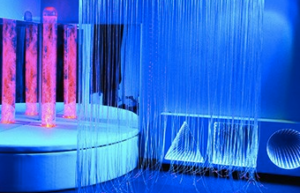Early Childhood Education Sensory Rooms
Sensory needs start in the womb and can be seen as early as the first few days of life. As parents we know our children have different sensory needs and almost intuitively adjust to meet them. But when children begin their early childhood education some of their immediate needs may not be met as quickly as at home.
Early childhood education has shown itself to be paramount to a child’s development. More and more preschools are addressing those sensory needs to provide a whole-child centered education. Creating a sensory room in your program, can not only address the needs of the children, but also provides solace to your staff and parent body. Let's take a look at some key components that may work for early childhood in creating a soft play multi-sensory environment.

Soft floors for soft play in your early childhood sensory room.
Space: You will need some space and it can be anywhere in your facility, but allotting the space can truly transform your program and awareness of sensory needs and different learners. Your room can be small, but consider how many children you serve, how many will need access to the room and how often.
Ground Rules: Be sure your staff is well trained in how your sensory room will operate. Will anyone have access? Who will monitor the equipment? How many children can be in the room at once? In general, it is best to have at least one go-to-person for questions, one to two children using the room at a time and scheduled times for using the room.
Soft Play: Now comes the fun. You will want soft furniture that kids can climb onto and it should be a room that allows exploration and yet is engaging and calming. We suggest you start with soft flooring. No shoes in the room! And…soft walls. You can then add balance beam, soft stairs, ramps, softies, and interactive walls and ball pools. It’s really up to you, but more is not always better. Pick 5-6 pieces that will engage and calm.
Soft play in an early childhood classroom. Fiber optics.
Accessories: You will want great lighting in your room from interactive, engaging equipment. Using bubble tubes, bubble walls, fiber optics, and projectors can make this room the best room in your facility. Allowing the kids to interact with the equipment will encourage exploration, color recognition, cause and effect and environmental control. Combining this equipment with soft platforms can bring the best of both worlds into one great room.

Benefits: The benefits of having a soft play sensory room include: interaction, motivation, self-control, speech and language development, sensory integration, motor development and overall well being. Add in a secure, safe environment for exploration and play combined with soothing lights, sounds and textures, and you can create an environment that many just transform children of all abilities.